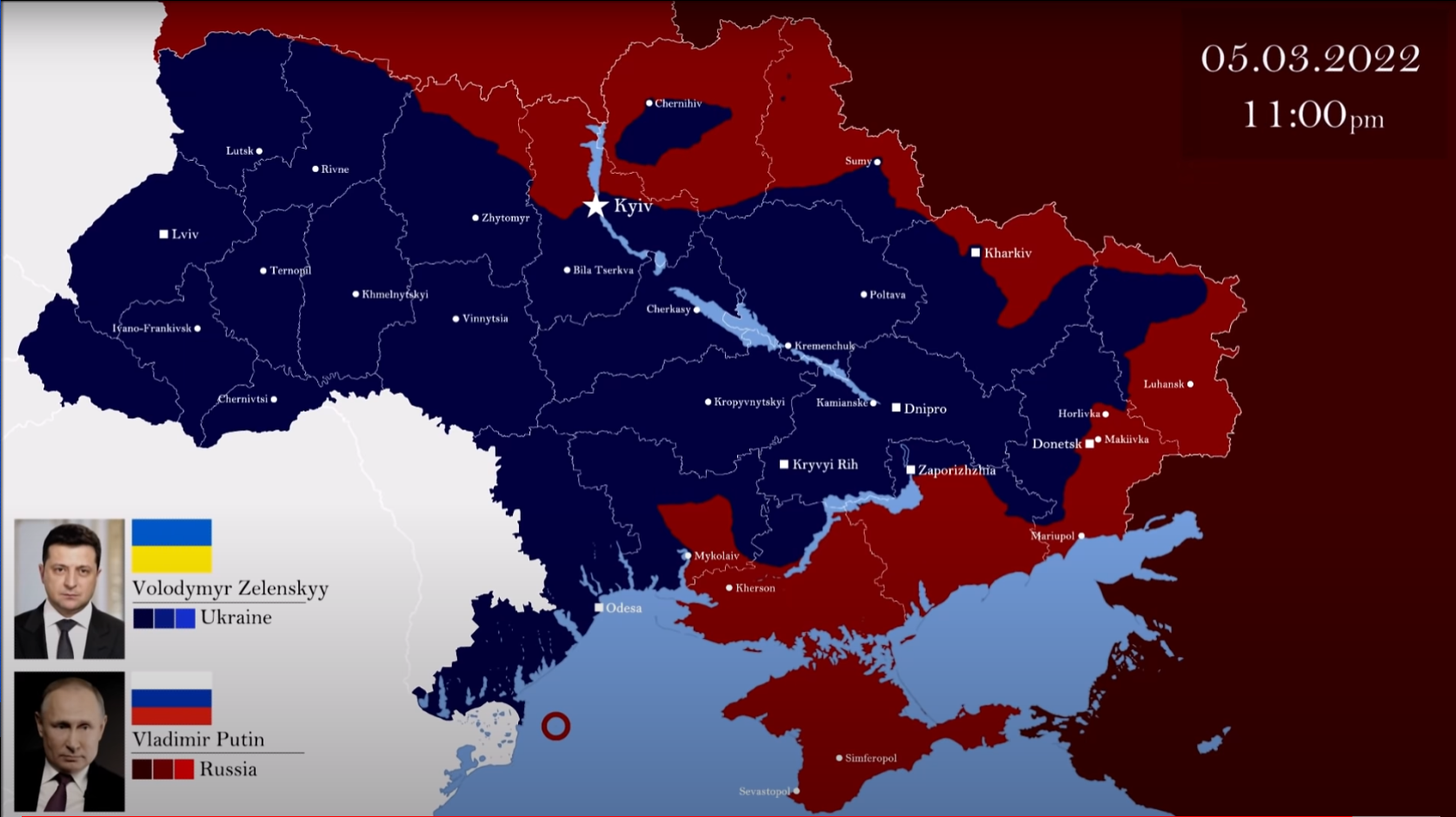World News: Russia-Ukraine War
by Conor Hustedde
After weeks of rapidly rising tensions on the Russia-Ukraine border, Russian President Vladimir Putin authorized a “special military operation” in Ukraine on February 23, 2022. Western nations are in agreement that this is in reality a true war, rather than a small-scale operation. In the preceding weeks, 140,000 Russian land troops had been moved to the countries’ border.
Putin has put forward three demands necessary for Russia to withdraw: 1) Ukraine should never be allowed to join NATO. 2) NATO troops must be removed from the Russian border and moved Westwards to their location during the reign of the Soviet Union. 3) NATO will agree to no longer expand, prohibiting further countries from joining.
It is likely that NATO has no intentions to accept these terms. Ukrainian President Volodymyr Zelenskyy has stayed in the capital city of Kyiv.
During the war, Russia has taken control of the Donbas and other Eastern regions, Kherson (the first major city taken by Russia) in the south, and areas in the northeast of Ukraine. In total this amounts to around 25% of Ukraine’s landmass.
Energy production has been a large incentive for the Russian invasion of Ukraine. Russian exports of energy to Western Europe; gas accounts for around 50% of the Russian government’s budget and 30% of Russia’s total GDP. Most Russian pipelines are from the Soviet Era and run through Ukraine, which Ukraine has placed tariffs upon amounting several billion dollars. Recently, it was discovered that Ukraine has large subterranean and offshore oil reserves. The Russian invasion appears to be an attempt to keep Russian oligarchs in power and protect Russia’s ability to export the energy crucial to their economy.
The area taken by Russia (red) as of March 6, 2022.
A 40-mile long Russian military convoy traveling to Ukraine’s capital Kyiv.



